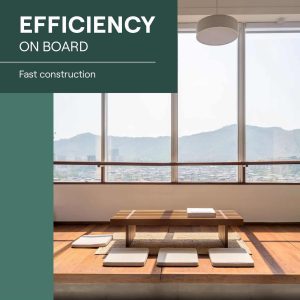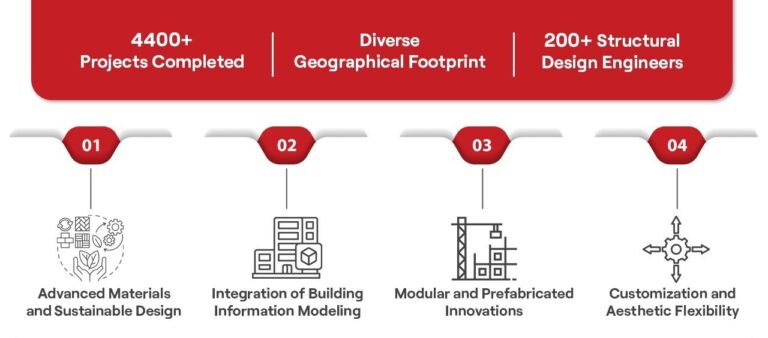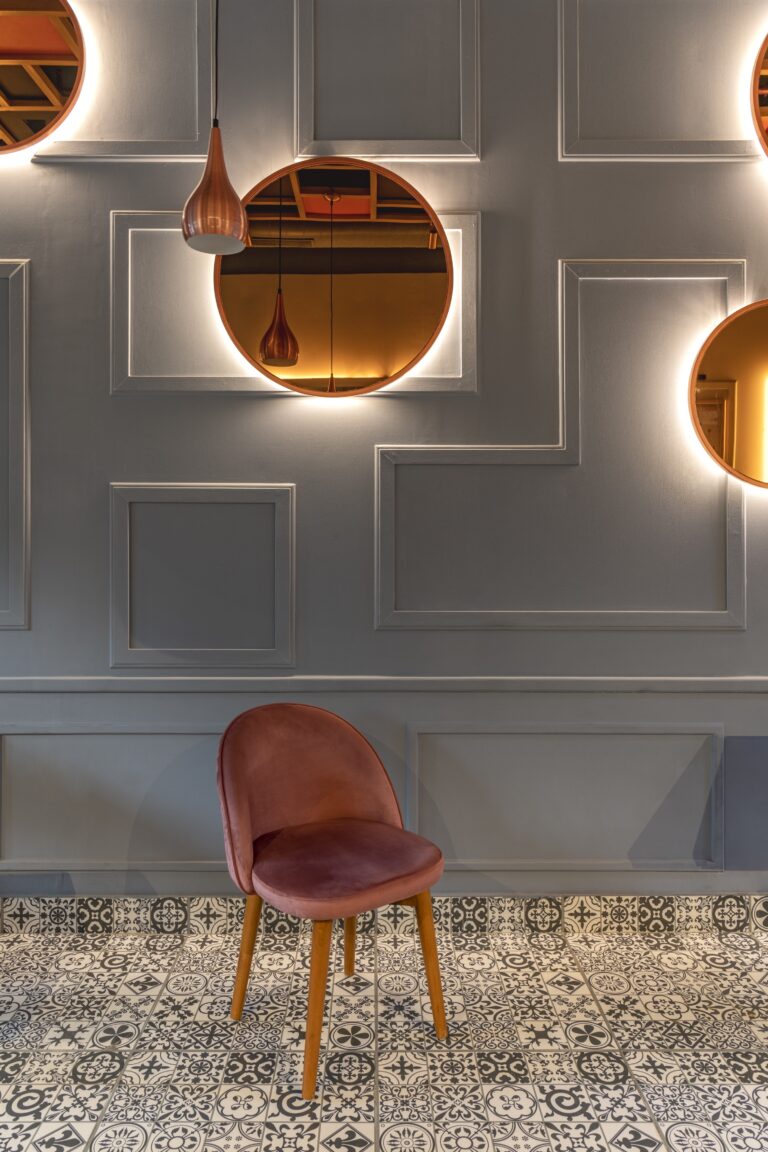The Indian construction industry is rapidly expanding, leading to a steady emergence of smarter methods of construction. As new techniques and methods emerge, the focus shifts to maximising efficiency and minimising costs. These newer methods of construction stand in stark contrast to traditional methods, which have several disadvantages. Some of which are:
- Longer project timelines
- High labour costs
- Excess wastage of materials
- Limited design flexibility
- Higher safety risks
Taking all these factors into consideration, it’s no wonder that builders are making the switch to smarter methods of construction. Pre-engineered buildings (PEBs) are one such innovative and sustainable method of construction.
What is a pre-engineered building?
Every structure you see is built upon a central frame, made of steel or wood. In traditional construction, this frame is manually constructed on-site. However, pre-engineered buildings move one step ahead by simplifying and automating this whole process.
PEBs are steel structures in which the components are designed and then manufactured in a factory. Each component of the pre-engineered building is then assembled on-site to form a complete building. They are customised to meet the specific needs of the project. This technology is widely used for industrial buildings and warehouse construction. It is fast expanding to other types of constructions as well, from commercial buildings to Office spaces.
Now that we’ve answered the question ‘what is a pre-engineered building’, let’s look at their advantages over traditional construction methods.
Advantages of pre-engineered buildings
1. Cost-effective
PEBs are designed using tapered sections and manufactured in highly controlled environment of a factory, which means there is less wastage of material compared to traditional construction. They are also faster to erect, which reduces labour costs.
2. Durable
Steel is a highly ductile material that can withstand reversible loads like wind, and earthquakes. Hence, PEBs are designed to withstand the most extreme weather conditions.
3. Flexible
PEBs can be customised to meet the specific requirements of the client. They can be designed to accommodate various building types, including commercial, industrial, and residential.
4. Environmentally friendly
Since steel is a recyclable material, this makes PEBs an environmentally friendly choice. They can also be designed for energy efficiency by maximising natural lighting and providing effective insulation, which reduces the energy requirements of the building.
Major components of pre-engineered steel buildings
PEB is made up of several structural and non-structural elements that are connected by bolted joints. Let’s take a closer look at the components of pre-engineered buildings, which include primary components, secondary components, sheeting or cladding, and accessories.
1. Primary components
The primary components of a pre-engineered building are columns and rafters that constitute the mainframe.
1. Mainframe
The mainframe is the skeleton of the building and is made up of built-up steel sections. It is designed to reflect the size and shape of the building. It comprises Columns and Rafters.
2. Columns
The columns are vertical members that support the main frame. They help transfer the load of the structure to the foundation.
3. Rafters
The rafters are horizontal structures that connect the columns and support the roof.
2. Secondary components
The secondary components of a pre-engineered building include purlins and girts, eave struts, and bracings.
- Purlins and girts run perpendicular to the rafters, providing support for roof sheeting
- Eave struts are located at the intersection of Roof Sheeting and Wall Cladding.
- Bracings are diagonal members that provide (lateral) stability to the structure.
3. Sheeting or cladding
The sheeting or cladding is the outer skin of the building and provides protection from the environment. It can be made from a variety of materials, including metal. It is supported by the secondary components and is available in a range of colours and finishes.
4. Accessories
Accessories are the additional components provided as per building needs. These can include doors, windows, vents, and insulation, among others.
Clearly, pre-engineered buildings are a revolutionary innovation that, in recent years, has changed the face of the construction industry. They are cost-effective, durable, flexible, and environmentally friendly.
One popular manufacturer of PEBs in India is Everest Industries. Everest is known for its cost-effective and highly customised pre-engineered buildings. Their range of services begins right from project conceptualisation to final on-site installation. They design, manufacture, supply, and erect buildings in a wide range of market segments, from industrial peb buildings to warehouses.
As the Indian construction industry progresses, PEBs are becoming the preferred choice for builders and architects, and their popularity is only set to increase in the coming years.




















5 Responses
I found the blog to be very insightful It provided a clear explanation of pre-engineered buildings, highlighting their efficiency and cost-effectiveness in modern construction. I appreciate the detailed breakdown of the benefits and customizable options that are available. This is a must-read for anyone who is considering innovative construction solutions.
“Thanks for sharing this information by reading this blog! if anyone require Pre Engineered Buildings or a PEB Plant. We would be happy to help and offer similar services.
Buildmate:https://www.buildmate.in/pre-engineered-buildings.php
Pre-engineered buildings, or PEBs, are transforming the Indian construction sector with their sustainable and effective methodology. Due to the fact that the steel components for these buildings are planned and produced in factories before being assembled on location, material waste and cost are greatly decreased. They are extremely durable and resistant to harsh weather. PEBs can be tailored and made to fit a variety of architectural styles. An outstanding example that combines strength and style is Pune’s Aluminum Standing Roofing System. PEBs are starting to take the lead in India’s new construction projects thanks to these benefits.
Pre-Engineered Buildings (buildmate) represent a significant advancement in the construction industry, offering numerous benefits over traditional building methods. These structures are meticulously designed and fabricated in a factory, ensuring high precision and quality control. One of the standout features of PEBs is their cost-effectiveness. By minimizing material wastage and reducing construction time, PEBs provide substantial savings in both material and labor costs.
Nice blog. Thank you
Pre engineered building manufacturers in Hyderabad